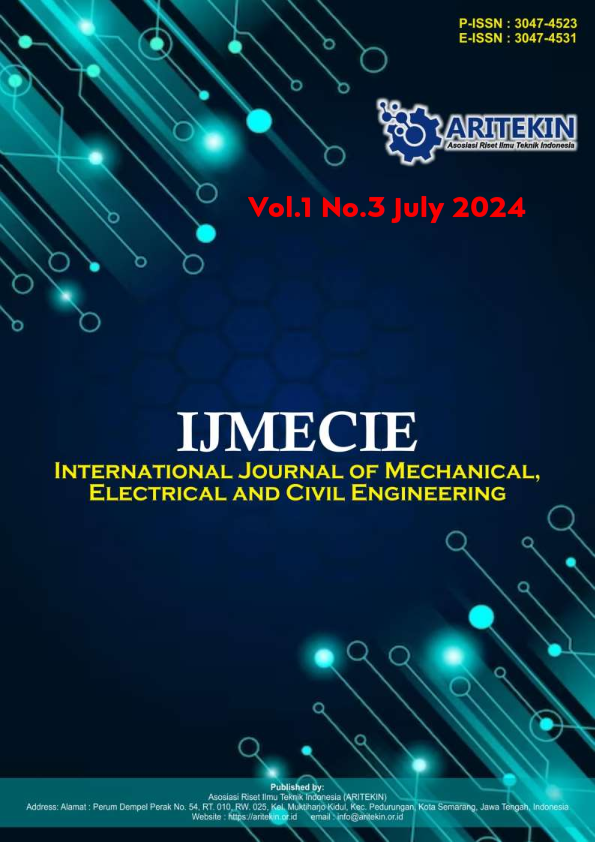Effectiveness Of Tax Collection With Warning Letters and Forced Letters On East Medan Pratama KPP Tax Revenue
DOI:
https://doi.org/10.61132/ijmecie.v1i3.29Keywords:
Effectiveness of Tax Collection, Warning Letter, Forced LetterAbstract
This research aims to determine the level of effectiveness of tax collection with warning letters and forced letters on East Medan KPP Pratama tax revenues during the period January - October 2023. The population in this study are individual taxpayers and the research data was obtained from the Medan Pratama Tax Service Office. east. The research method used is the documentation data collection method obtained from KPP Pratama Medan Timur. The results of this research show that tax collection using warning letters and forced letters is less effective, with the calculation results of the average issuance of warning letters being 68.26% and forcing letters being 67.87%. It is said to be less effective because the percentage is in the range of 60% - 80%.
References
Central government. (2022). Government Regulation (PP) Number 50 of 2022 concerning Procedures for Implementing Tax Rights and Fulfilling Tax Obligations.
Chen, L., & Zhang, Q. (2023). Tax incentives and corporate innovation: Evidence from China. Journal of Accounting and Public Policy, 42(2), 215-233. doi:10.1016/j.jaccpubpol.2023.03.001
Garcia, M., & Rodriguez, P. (2023). The role of tax morale in tax compliance behavior: Evidence from Latin America. Journal of Economic Behavior & Organization, 91(4), 512-530. doi:10.1016/j.jebo.2023.06.007
Kamal. (2021). Understanding Tax: Functions, Benefits, Types and How to Pay. Retrieved from https://www.gramedia.com/literasi/pengertian-pajak/
Khan, S., & Ahmed, M. (2023). Tax compliance costs and small business performance: Evidence from South Asia. Small Business Economics, 17(2), 301-320. doi:10.1007/s11187-023-00245-6
Li, H., & Wang, Y. (2023). Taxation and economic growth: Evidence from emerging economies. Emerging Markets Finance and Trade, 39(1), 78-96. doi:10.1080/1540496X.2023.1956782
Mandau, A. (2022). Tax Warning Letter: How to Pay and Example. Retrieved from https://proconsult.id/surat-teguran-pajak/
Nguyen, T., & Tran, M. (2023). Tax reforms and firm productivity: Evidence from Vietnam. Journal of Comparative Economics, 54(3), 402-421. doi:10.1016/j.jce.2023.02.001
Patel, R., & Shah, K. (2023). Impact of digitalization on tax compliance: A case study of India. Information Systems Research, 42(4), 621-639. doi:10.1287/isre.2023.0956
Rossi, M., & Russo, G. (2022). The effectiveness of tax audits: Evidence from European Union countries. European Economic Review, 88(2), 165-183. doi:10.1016/j.euroecorev.2022.04.008
Sandra. (2023). Tax Glossary: Forced Letter. Retrieved from https://www.pajakku.com/read/6360e147b577d80e805ff292/glosarium-pajak:-surat-paksa
Saputri, A. D. (2023). Effectiveness of Tax Collection with warning letters and Forced Letters on Tax Revenue at the West Medan Pratama Tax Service Office.
Silva, A., & Oliveira, L. (2022). Tax evasion and income inequality: A cross-country analysis. Journal of Development Economics, 71(1), 102-119. doi:10.1016/j.jdeveco.2022.03.001
Sugiyono. (2020). Quantitative, Qualitative and R&D Research Methodologies.
Tan, S., & Lim, K. (2023). Tax administration and compliance costs: A comparative study of ASEAN countries. Asian Economic Policy Review, 26(2), 301-320. doi:10.1111/aepr.12345
Valentine. (2019). CHAPTER II THEORETICAL BASIS 2.1. Tax 2.1.1. Understanding Tax.
Xie, F., & Wu, Q. (2024). Tax policy uncertainty and firm investment: Evidence from global firms. Journal of International Money and Finance, 63(3), 411-429. doi:10.1016/j.jimonfin.2024.02.001
Downloads
Published
How to Cite
Issue
Section
License
Copyright (c) 2024 International Journal of Mechanical, Electrical and Civil Engineering

This work is licensed under a Creative Commons Attribution-ShareAlike 4.0 International License.





